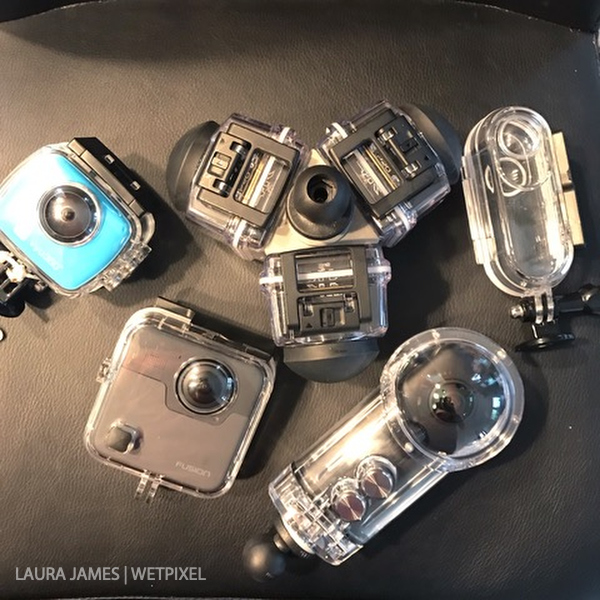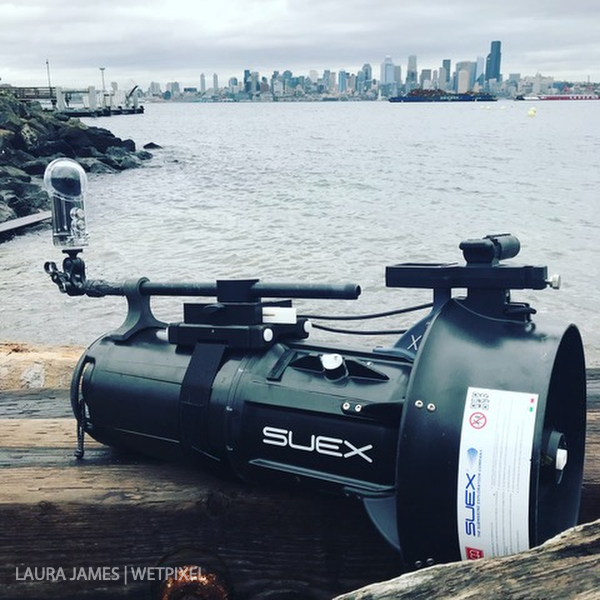Laura James: Underwater 360° cameras and Insta360 review
Round up of 360° camera and housing options for underwater use
By Laura James

Generally speaking, I’m not the biggest “early adopter”. This may seem counterintuitive given my penchant for 360° video. What I mean by is that most of the time I love letting others find the buggies first and then buy the latest greatest thing 6-8 months down the road when consumerism strikes again, the newness wears off, something greater hits the airwaves and it becomes available on eBay.
Except where underwater 360° is concerned. In this case, I’ve been known to throw caution to the wind and as long as we’re talking reasonable prices, I’ll go for it. Ever the optimist, this means I have a lot of splash housings that don’t work underwater.
What does “work” underwater mean? First off I’ll break this down into three categories. “Consumer” “Prosumer” and “pro” so that we are clear. (There will always be overlap, and of course, there are special use cases)

All cameras:
- Crisp clear focus underwater
- Stitchable
- 4k minimum resolution
- 30fps minimum
Consumer:
- In-camera stitching
- Easy controls
- Housing base often visible in Nadir
- Stitch is moderately clean, some Picasso-ing or magic fish on the stitch line
Prosumer:
- Pull the individual images for stitching in professional stitching software
- Some kind of in-camera stabilization (although Fusion’s stabilization can make sync look wonky)
- 5k or above
- Can be cleanly stitched in camera, app or easily with proprietary software on PC
- Some manual image controls
- Preview on phone/pad (while topside)
- Generally back to back
- Readily patchable Nadir (and Zenith). (Meaning only small distortion/pinching or only a tiny part of housing visible)
- Enough overlap for good stitch
Professional:
- Clean nadir and zenith
- Good overlap for clean stitch
- Good dynamic range
- Option for Log mode (so far I have not been impressed by most LOG modes but I can dream)
- More image controls
- Bigger sensors
- Better dynamic range and low light
- Multiple cameras (either in an array or unibody design)
- Sync-able (either via sync generator or camera design)
- Wishful dreaming would be camera controls at every level.
By all accounts, there are not many true Professional grade underwater 360° cameras and if you add in the ability to monitor, you are limiting it to maybe 3 or 4 options (almost always custom made or limited production and VERY VERY expensive) and then only if you exclude the need for clean zenith and nadir.
OK, now that we have that out of the way let’s take a look at the latest CONSUMER underwater 360 camera option to hit the market.